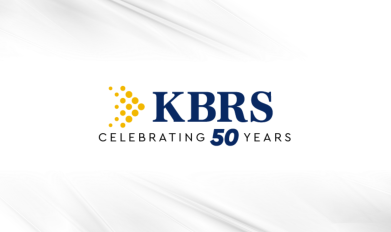Lessons Learned from 45 years of Helping Organizations in Downturns
Few would have predicted the crisis organizations are facing today. So much remains unknown about the road to recovery. Yet leaders know that inaction isn’t an option. There isn’t a playbook for leading through a pandemic on the scale of COVID-19, however there are lessons to be learned from the past.
Over the last 45 years, we’ve supported organizations through downturns and difficult, disruptive change. Our diverse team of HR leaders have played pivotal roles in leading change within organizations as well as offering consultative support to leaders.
Based on the collective experience of our team, we believe four strategic priorities will be critical to ensure organizations successfully emerge from this crisis:
1. Preserve Trust.
“Uncertain and threatening times calls for visible, communication rich leadership,” says Catherine Woodman, a seasoned communications and HR leader and Senior Associate with KBRS. “Provide insight, perspective, context and communicate short and long-term plans with hard optimism.” Whether this means virtual meetings, video messages, personal phone calls, emails or a combination of all of these, communication builds trust. Honesty should always prevail, and it’s okay to say “I don’t know” when you truly don’t. No one expects you to make promises you can’t keep. Suggesting no one will lose their jobs is a commitment many employers aren’t able to make. But it is equally important to be transparent about the current state of your organization, tackling fear and rumors as directly as possible.

2. Engage Your Team to Learn Rapidly.
A quiet workforce does not equate to a well-functioning team. Seeking feedback is essential. “In healthy organizational cultures, people are not afraid to speak up for fear of being ridiculed or losing their job,” says Katherine Frank, Partner with KBRS and Certified Human Resource Professional. “Open lines of communication are critical during uncertain times – both to assess and maintain employee engagement and to ensure insights from the team are guiding strategic decisions.” A strong brand will help many organizations through an economic downturn. The connection between employee engagement and customer brand experience shouldn’t be underestimated.
The more leaders are able to share information about current challenges as well as the vision and plan for the future, the more employees will be able to work towards the same goals and participate in identifying solutions.
3. Balance Short Term Action with Long Term Thinking.
Leaders need to consider carefully what recovery will look like suggests Joanne Brown, experienced HR executive and Senior Associate with KBRS. “How have the strategic priorities shifted? Should the current organizational structure be maintained or does it need to evolve? Will the role of remote work change? The answer to these questions will influence everything from the size of the team, the skills and talents required, and the physical workspace needed.” Leaders will need to make hard decisions to ensure that organizations are able to weather an economic downturn without losing the ability to innovate, adapt, and retain strong organizational culture.
While redeploying employees is often preferred, it isn’t always possible. When the workforce must be reduced, it’s imperative to act with compassion, empathy and fairness. “When decisions are guided by objective, business-based criteria that is rooted in corporate strategy and informed by corporate values, culture and brand are strengthened,” suggests Catherine Woodman.
Should workforce reductions prove permanent, offering departing employees Career Transition support (also known as Outplacement) as a part of their severance can help retain employer brand integrity, decrease the chance of litigation, and minimize impact on team morale. Layoffs impact leaders and colleagues, but they are most difficult for those who experience job loss. When organizations offer departing employees support in finding new opportunities, all parties are left with a better opinion about the brand.

4. Develop Stronger Teams.
As you begin to focus on the future, recognize you are not returning to the way things were. The new world order will necessitate resilient teams and leaders, capable of innovating and accelerating change, and thriving in a virtual work environment.
“Digital transformation and flexible working conditions were two of the biggest external and internal challenges facing organizations before COVID-19,” states Michelle Fitzgerald, Senior Associate with KBRS. “Early adopters of these trends have been better positioned to mitigate dips in productivity and adapt to changing environments.”
A crisis expediates change. Many of the recent shifts – such as the dramatic increase in remote work, online purchasing, and virtual training options – are changing interest and acceptance for new ways of operating. Successful organizations will be defined by their ability to innovate, create, and adapt. This will require resilient organizations and people, and strong leadership.
For many organizations, developing stronger, more resilient teams will require new skills, new talents and new approaches to leading. In our experience, talent attraction and talent development play complementary roles. Organizations that invest in developing their teams, through training or coaching, are able to optimize the performance of existing employees and build stronger cultures. In turn, they are able to attract top talent to take on key roles within their teams. It’s important to keep in mind that even when unemployment rises, the strongest candidates will always have options.
Leaders with a clear vision for their organizations leverage shifts external workforces to attract sought-after professionals whom other organizations are unable to retain. In some cases, organizations may complement their full-time workforces with professionals interested in contract opportunities.
The right approach for your organization will be as unique as the people who comprise it. Regardless of your industry, strengthening organizations begins with a focus on stronger people, whether you are preparing your current team for the challenges ahead, welcoming new team members, or supporting people to achieve career success.
Grappling with how to ensure your people are prepared for the road to recovery?
Contact our team for a confidential and exploratory conversation.












